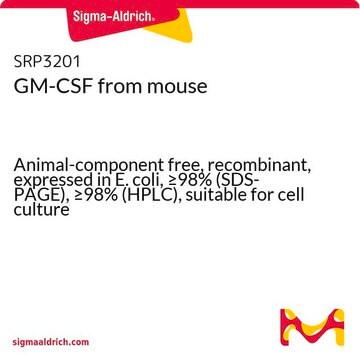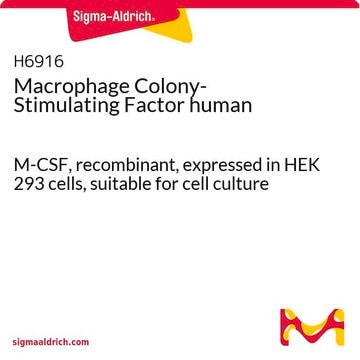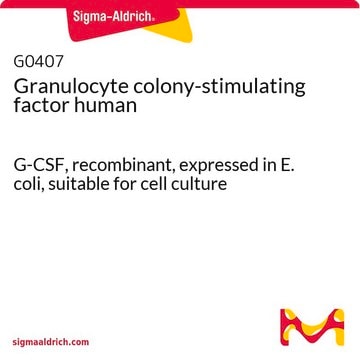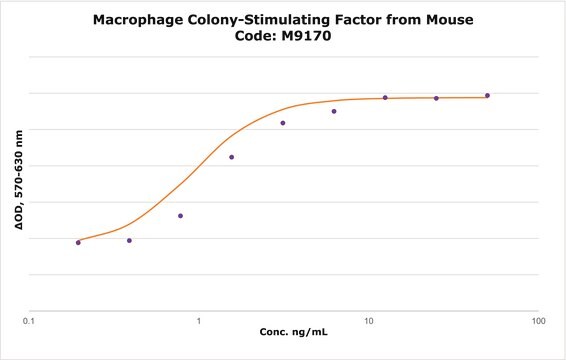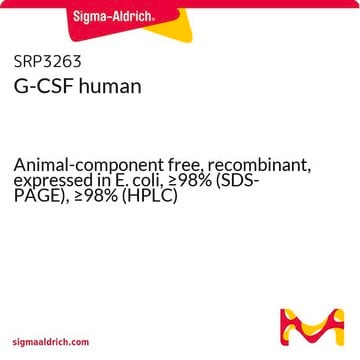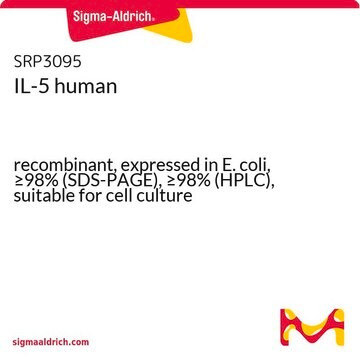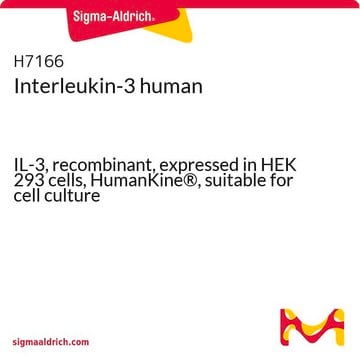G5035
Granulocyte-Macrophage Colony-Stimulating Factor human
GM-CSF, recombinant, expressed in E. coli, suitable for cell culture
Sinónimos:
GM-CSF human
About This Item
Productos recomendados
biological source
human
Quality Level
recombinant
expressed in E. coli
assay
≥98% (SDS-PAGE)
form
lyophilized powder
potency
≤0.1 ng/mL EC50
mol wt
14.6 kDa
packaging
pkg of 4X5 μg
pkg of 5 μg
storage condition
avoid repeated freeze/thaw cycles
technique(s)
cell culture | mammalian: suitable
impurities
≤1.000 EU/μg
color
white
solubility
water: soluble 0.010 mL, clear, colorless
UniProt accession no.
storage temp.
−20°C
Gene Information
human ... CSF2(1437) , CSF2(1437)
¿Está buscando productos similares? Visita Guía de comparación de productos
General description
Biochem/physiol Actions
Physical form
Analysis Note
Storage Class
11 - Combustible Solids
wgk_germany
WGK 3
flash_point_f
Not applicable
flash_point_c
Not applicable
ppe
Eyeshields, Gloves, type N95 (US)
Certificados de análisis (COA)
Busque Certificados de análisis (COA) introduciendo el número de lote del producto. Los números de lote se encuentran en la etiqueta del producto después de las palabras «Lot» o «Batch»
¿Ya tiene este producto?
Encuentre la documentación para los productos que ha comprado recientemente en la Biblioteca de documentos.
Los clientes también vieron
Artículos
Read article on hematopoietic cytokines and hematopoiesis
Nuestro equipo de científicos tiene experiencia en todas las áreas de investigación: Ciencias de la vida, Ciencia de los materiales, Síntesis química, Cromatografía, Analítica y muchas otras.
Póngase en contacto con el Servicio técnico

